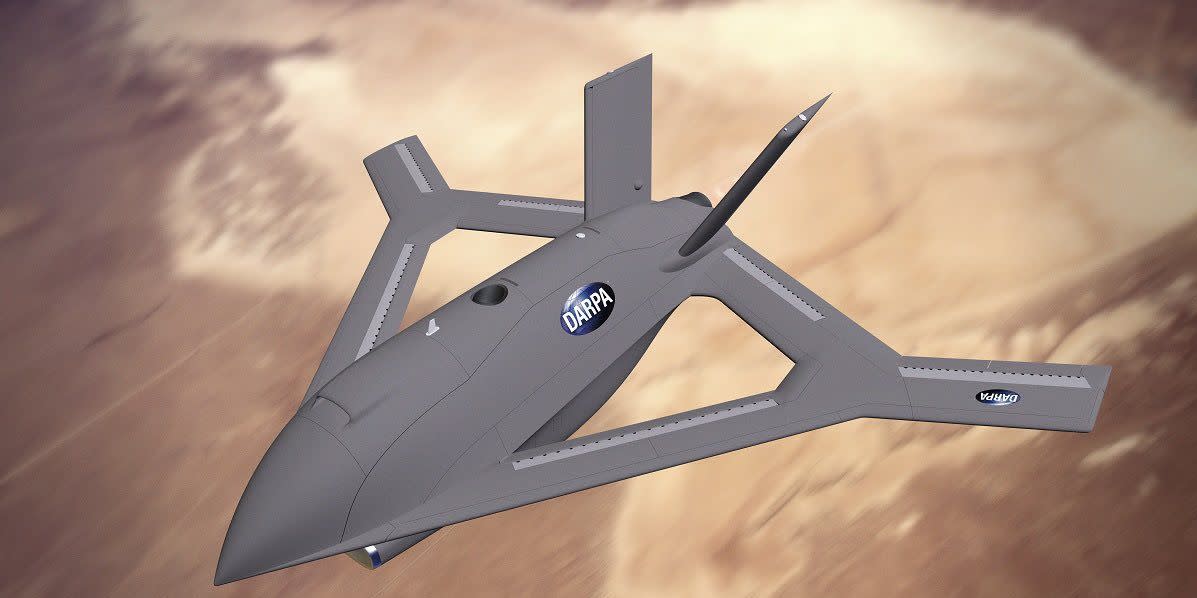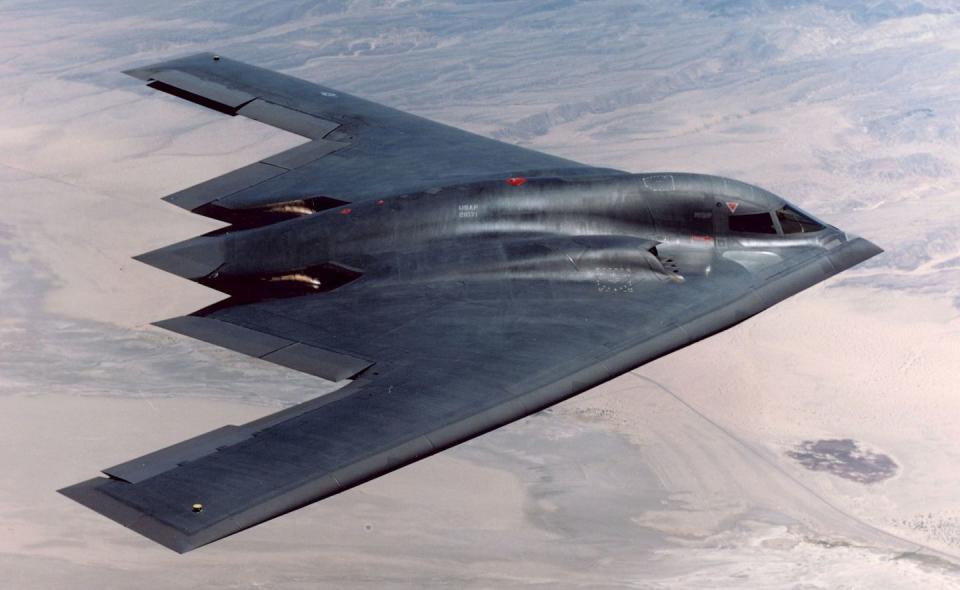The Pentagon's Curious New X-Plane Maneuvers Using Only Blasts of Air

DARPA, the Pentagon’s avant-garde advanced technologies research program, just revealed the name of a new drone technology demonstrator designed to test active flow control (AFC) systems, which could improve fuel efficiency and reduce radar signatures by allowing for more aerodynamic aircraft geometry than before.
The “experimental uncrewed aircraft” will be named the X-65, and will use banks of compressed air nozzles to execute maneuvers “without traditional, exterior-moving flight controls” like hinged flaps, rudders, ailerons, elevators, and spoilers.
Such traditional flight control surfaces inevitably involve added weight and complexity.
Introducing the X-65! The #xplane we're developing to fly without traditional, exterior-moving flight controls received its official designation. CRANE aims to build an experimental uncrewed aircraft that maneuvers by controlling the air flow around it. https://t.co/mQRZ9Um7wX pic.twitter.com/lPI3vETHUp
— DARPA (@DARPA) May 15, 2023
The demonstrator is the spawn of Phase 2 of DARPA’s Control of Revolutionary Aircraft with Novel Effectors (CRANE) project.
Commentators have remarked that the “novel X-plane,” as described by DARPA, resembles the fictional X-Wing starfighter in Star Wars when seen from the front due to the canted double wings (though from other angles, the similarity is much less apparent.) The X-65’s designation may allude to the X-Wing’s T-65 factory model designation in Star Wars lore.

If so, it wouldn’t be the first time R&D has worked a sci-fi reference into real-life tech. DARPA once tested a black project visual stealth aircraft named the Bird of Prey after a cloaked Klingon scout ship in the Star Trek universe.

The Aurora X-Plane
The full-sized, unmanned aircraft will be built by Aurora Flight Sciences—a research subsidiary of Boeing. During Phase 1, Aurora completed four weeks of wind tunnel testing on a quarter-size prototype of the X-65 in a San Diego facility. The design incorporated compressed air-blasting/suctioning nozzle arrays embedded in the upper surface of each wing.
DARPA has awarded Aurora Flight Sciences a phase 2 contract for the CRANE program. This aircraft will have no exterior moving parts. It'll fly instead using Active Flow Control (AFC), using a series of nozzle arrays along the wings.https://t.co/SHOL9pV6IL pic.twitter.com/GGAOaUr4mg
— Junsupreme (@RyszardJonski) January 21, 2023
Aurora’s VP has stated the X-plane will test the technology at “mission-relevant scale and Mach numbers”—which sounds like the company has aspirations to eventually test the craft’s supersonic flight capability.
However, according to Aurora, the current aircraft under construction—with components under assembly in Virginia, West Virginia, and Mississippi—is expect to attain only Mach .7 (537 miles per hour). Due to begin testing in 2025, it reportedly will have wings spanning up to 30 feet and weighs 3.5 tons.
Pictures suggest it will be propelled by a single jet engine with an intake under the belly. It also appears to have a dorsal (upper fuselage) intake and exhaust, possibly used to generate compressed air. The quarter-size prototype reportedly had 14 nozzle banks.
The design will be sufficiently modular to allow for the swapping in and out of different wings with different degrees of sweep and nozzles (“AFC effectuators”), including those devised by other companies. The CRANE program’s manager, Richard Wlezien, has thus said that the X-plane may serve as a “national test asset” for a variety of other air flow control technologies that could hypothetically include, say, those developed for BAE System’s MAGMA drone.
Active Flow Control: How and Why
The idea behind active flow control is to use nozzles on the aircraft to blast jets of air that dynamically manipulate the pressure of the boundary air flowing around the plane, allowing the craft to execute maneuvers. This contrasts with ‘passive’ permanent features of aircraft that affect airflow, such as vortex generators. Technically, compressed air is not the only option, as a plasma effectors and others methods can also be used to manipulate air flow.
It’s probably easiest to understand active flow control in the context of what it’s trying to achieve—finding ways to smooth away surfaces like an aircraft’s tail that induce drag and increase radar signature.
Of course, stealth is especially important for military aircraft—including drones—if they are to survive for very long long over contested airspace monitored by modern radar-guided surface-to-air missile defenses. Indeed, the ever-increasing range of both surface-to-air and air-to-air weapons makes it desirable for even non-combat aircraft like tankers and transports to sport a reduced radar cross-section.
Notably, the U.S.’s B-2 stealth bombers are tailless for this reason, relying on elaborate flight control systems that differentially manipulate the flaps to make turns and generally ensure stability. But even movements of the B-2’s flaps increase its radar cross-section—a fleeting Achille’s heel that AFC could, in theory, render unnecessary in future aircraft.

Meanwhile, reducing drag—and thereby improving fuel efficiency and range—is a huge deal for both the military and civilian operators. Airlines, for example, could produce less pollution and save potentially vast sums on fuel with even a few percentage points of greater fuel efficiency. Military aircraft—from jets to drones to missiles—could fly further with the same amount of fuel. And drones could endure additional hours over the battlespace before needing to return to base.
AFC nozzles arrays will supposedly weigh less and be less complex than the equivalent moving control surfaces they would replace, resulting in further fuel savings, range and agility extensions, reduced ground-based maintenance burdens, and lower manufacturing costs.
A tertiary benefit is that active flow control could potentially enhance maneuverability. During early AFC tests by NATO in 2018, when demonstrator drones maneuvered with AFC instead of regular control surfaces, they responded far more aggressively than expected. If AFC systems can evoke such agility while retaining the advertised low weight, complexity and radar cross section, they might be attractive for a variety of aircraft seeking to leverage the agility of an unstable airframe like modern jet fighters.
The fuel savings that mature AFC technology could deliver to all aircraft—military, civilian, manned, or unmanned alike—amount to a huge deal for everybody, if projects like CRANE find the technology to be as affordable and practical as hoped.
You Might Also Like

 Yahoo Movies
Yahoo Movies 
